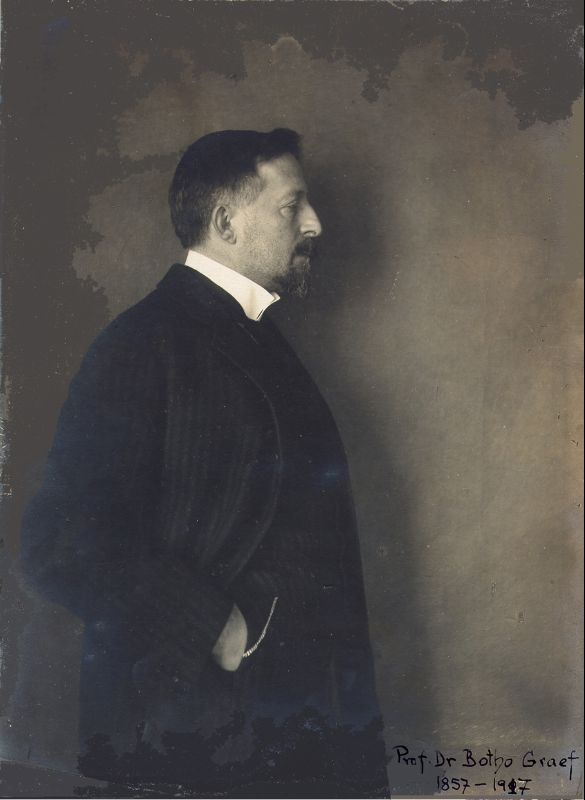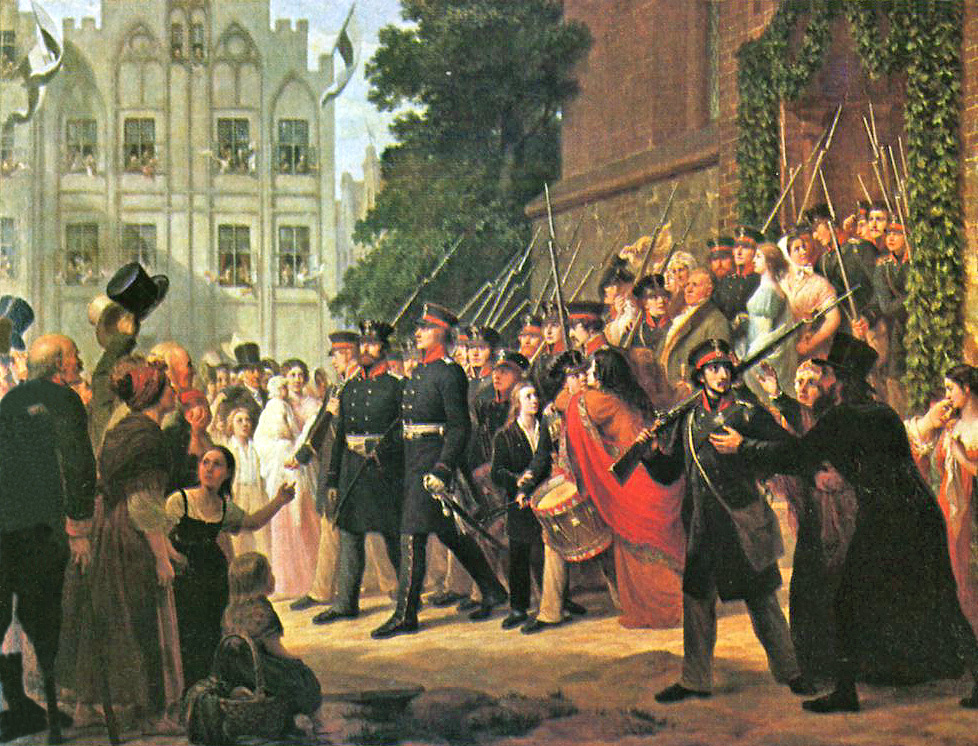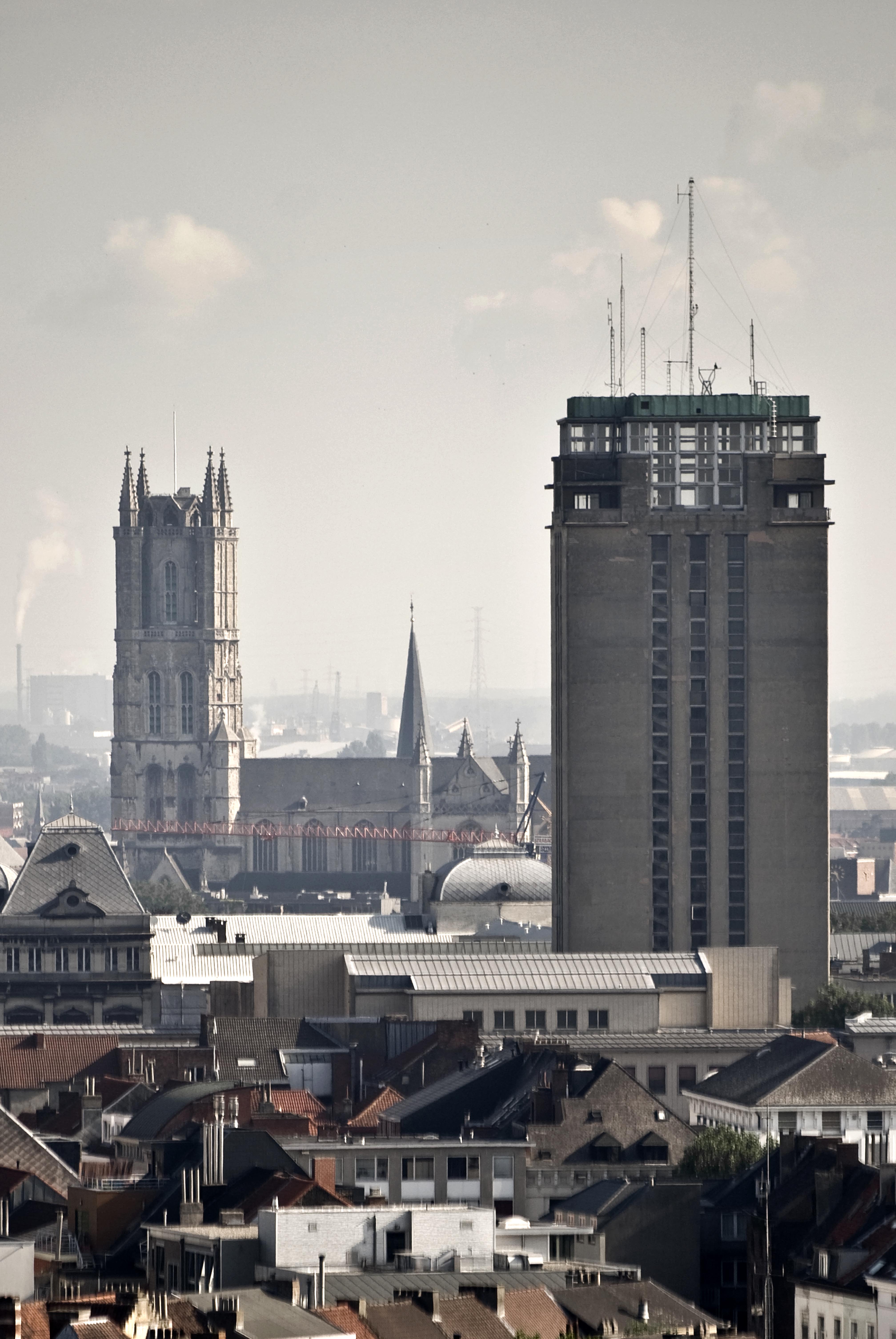|
Botho Graef
Franz Botho Graef (12 October 1857, Berlin – 9 April 1917, Königstein im Taunus) was a German classical archaeologist and art historian. His father was painter Gustav Graef, and his sister, Sabine Lepsius, was also an artist of some note. Graef taught at the University of Jena from 1904 until 1917. Writings * ''Hodlers und Hofmanns Wandbilder in der Universität Jena''. Eugen Diederichs Verlag, Jena, 1910. * ''Henry van de Velde Henry Clemens van de Velde (; 3 April 1863 – 15 October 1957) was a Belgian painter, architect, interior designer, and art theorist. Together with Victor Horta and Paul Hankar, he is considered one of the founders of Art Nouveau in Belgium ...'' In: Der Bücherwurm. Monatsschrift für Bücherfreunde. Verlag der Bücherwurm, Dachau, 1913. * Written with Ernst Langlotz: ''Die antiken Vasen von der Akropolis zu Athen'', Bd. I-II, de Gruyter, Berlin, 1925-1933 (posthum). References Biographie Stadt Jena* 1857 births 1917 deaths Germa ... [...More Info...] [...Related Items...] OR: [Wikipedia] [Google] [Baidu] |
Botho Graef
Franz Botho Graef (12 October 1857, Berlin – 9 April 1917, Königstein im Taunus) was a German classical archaeologist and art historian. His father was painter Gustav Graef, and his sister, Sabine Lepsius, was also an artist of some note. Graef taught at the University of Jena from 1904 until 1917. Writings * ''Hodlers und Hofmanns Wandbilder in der Universität Jena''. Eugen Diederichs Verlag, Jena, 1910. * ''Henry van de Velde Henry Clemens van de Velde (; 3 April 1863 – 15 October 1957) was a Belgian painter, architect, interior designer, and art theorist. Together with Victor Horta and Paul Hankar, he is considered one of the founders of Art Nouveau in Belgium ...'' In: Der Bücherwurm. Monatsschrift für Bücherfreunde. Verlag der Bücherwurm, Dachau, 1913. * Written with Ernst Langlotz: ''Die antiken Vasen von der Akropolis zu Athen'', Bd. I-II, de Gruyter, Berlin, 1925-1933 (posthum). References Biographie Stadt Jena* 1857 births 1917 deaths Germa ... [...More Info...] [...Related Items...] OR: [Wikipedia] [Google] [Baidu] |
Berlin
Berlin ( , ) is the capital and largest city of Germany by both area and population. Its 3.7 million inhabitants make it the European Union's most populous city, according to population within city limits. One of Germany's sixteen constituent states, Berlin is surrounded by the State of Brandenburg and contiguous with Potsdam, Brandenburg's capital. Berlin's urban area, which has a population of around 4.5 million, is the second most populous urban area in Germany after the Ruhr. The Berlin-Brandenburg capital region has around 6.2 million inhabitants and is Germany's third-largest metropolitan region after the Rhine-Ruhr and Rhine-Main regions. Berlin straddles the banks of the Spree, which flows into the Havel (a tributary of the Elbe) in the western borough of Spandau. Among the city's main topographical features are the many lakes in the western and southeastern boroughs formed by the Spree, Havel and Dahme, the largest of which is Lake Müggelsee. Due to its l ... [...More Info...] [...Related Items...] OR: [Wikipedia] [Google] [Baidu] |
Königstein Im Taunus
Königstein im Taunus () is a health spa and lies on the thickly wooded slopes of the Taunus in Hesse, Germany. The town is part of the Frankfurt Rhein-Main urban area. Owing to its advantageous location for both scenery and transport on the edge of the Frankfurt Rhine Main Region, Königstein is a favourite residential town. Neighbouring places are Kronberg im Taunus, Glashütten, Schwalbach am Taunus, Bad Soden am Taunus and Kelkheim. Geography Neighbouring communities Königstein borders – from northwest to east – on the communities of Glashütten, Schmitten, Oberursel, and Kronberg (all four in the Hochtaunuskreis), and from southeast to southwest on Schwalbach, Bad Soden and Kelkheim (all three in the Main-Taunus-Kreis). Constituent communities Besides the main town, which bears the same name as the whole, Königstein has three outlying centres: Falkenstein, Mammolshain and Schneidhain. Since 2001, Falkenstein has borne the designation (health spa) independe ... [...More Info...] [...Related Items...] OR: [Wikipedia] [Google] [Baidu] |
Classical Archaeology
Classical archaeology is the archaeological investigation of the Mediterranean civilizations of Ancient Greece and Ancient Rome. Nineteenth-century archaeologists such as Heinrich Schliemann were drawn to study the societies they had read about in Latin and Greek texts. Many universities and foreign nations maintain excavation programs and schools in the area – such is the enduring appeal of the region's archaeology. Cultures discussed Classical archaeology in its strictest, most traditional sense applies only to the study of Classical Athenian culture and the culture of the Roman Republic and Empire. However, over the course of the last century, the field has expanded to include discussions of the elaborate mosaic of cultures that produced the civilizations of Ancient Greece and Rome. Classical archaeologists interested in Greece frequently discuss Crete and the Minoan civilization present on that island during the Bronze Age. They also discuss the Helladic and Geometric p ... [...More Info...] [...Related Items...] OR: [Wikipedia] [Google] [Baidu] |
Art History
Art history is the study of aesthetic objects and visual expression in historical and stylistic context. Traditionally, the discipline of art history emphasized painting, drawing, sculpture, architecture, ceramics and decorative arts; yet today, art history examines broader aspects of visual culture, including the various visual and conceptual outcomes related to an ever-evolving definition of art. Art history encompasses the study of objects created by different cultures around the world and throughout history that convey meaning, importance or serve usefulness primarily through visual representations. As a discipline, art history is distinguished from art criticism, which is concerned with establishing a relative artistic value upon individual works with respect to others of comparable style or sanctioning an entire style or movement; and art theory or "philosophy of art", which is concerned with the fundamental nature of art. One branch of this area of study is aesthetics, wh ... [...More Info...] [...Related Items...] OR: [Wikipedia] [Google] [Baidu] |
Gustav Graef
Gustav Graef (14 December 1821 – 6 January 1895) was a German painter, primarily of portraits and historical subjects. Life and work Graef was born in Königsberg. In 1842, he entered the University of Königsberg, where he was an enthusiastic member of the Student Corps and produced his first lithographs. His training as a painter began in Düsseldorf with Theodor Hildebrandt and Wilhelm von Schadow at the Royal Academy. He made several study trips to Antwerp, Paris, Munich and Italy. Upon his return to Königsberg, he married a former acquaintance from his drawing class, the painter and lithographer Franziska Liebreich (1824–1893), who came from a prominent Jewish family. One of their sons, Botho, became a noted art historian. Their daughter Sabine married the painter Reinhold Lepsius and became a well-known painter herself. In 1849, he received the contract to paint frescoes in the south dome hall of the Neues Museum; designed by Wilhelm von Kaulbach, depicting Wid ... [...More Info...] [...Related Items...] OR: [Wikipedia] [Google] [Baidu] |
Sabine Lepsius
Sabine Lepsius (15 January 1864 – 22 November 1942) was a German portrait painter. Life She was born in Berlin as the daughter of portrait painter Gustav Graef and Franziska Liebreich (1824–1893), a lithographer. She studied with her father and, in 1892, married the painter Reinhold Lepsius. She and her husband were held in equal regard and were very popular with the business community and the wealthy. Her brother was the art historian Botho Graef. She was also a close friend and follower of Stefan George. Her son Stefan (1897–1917), who was killed in World War I, was named after him. In 1935 she published a book about their friendship in which she attributed her brother Botho's fatal heart attack to the news of her son's death. Lepsius exhibited her work at the Woman's Building at the 1893 World's Columbian Exposition in Chicago, Illinois. Her salon in Berlin-Westend was considered a major social gathering point. Georg Simmel, Wilhelm Dilthey, August Endell and ... [...More Info...] [...Related Items...] OR: [Wikipedia] [Google] [Baidu] |
University Of Jena
The University of Jena, officially the Friedrich Schiller University Jena (german: Friedrich-Schiller-Universität Jena, abbreviated FSU, shortened form ''Uni Jena''), is a public research university located in Jena, Thuringia, Germany. The university was established in 1558 and is counted among the ten oldest universities in Germany. It is affiliated with six Nobel Prize winners, most recently in 2000 when Jena graduate Herbert Kroemer won the Nobel Prize for physics. In the 2023 Times Higher Education World University Rankings, the university was awarded 189th place in the world. It was renamed after the poet Friedrich Schiller who was teaching as professor of philosophy when Jena attracted some of the most influential minds at the turn of the 19th century. With Karl Leonhard Reinhold, Johann Gottlieb Fichte, G. W. F. Hegel, F. W. J. Schelling and Friedrich Schlegel on its teaching staff, the university was at the centre of the emergence of German idealism and early Romanti ... [...More Info...] [...Related Items...] OR: [Wikipedia] [Google] [Baidu] |
Henry Van De Velde
Henry Clemens van de Velde (; 3 April 1863 – 15 October 1957) was a Belgian painter, architect, interior designer, and art theorist. Together with Victor Horta and Paul Hankar, he is considered one of the founders of Art Nouveau in Belgium.'''' He worked in Paris with Samuel Bing, the founder of the first gallery of Art Nouveau in Paris. Van de Velde spent the most important part of his career in Germany and became a major figure in the German Jugendstil. He had a decisive influence on German architecture and design at the beginning of the 20th century. Early life Van de Velde was born in Antwerp, where he studied painting under Charles Verlat at the famous Royal Academy of Fine Arts, Antwerp. He then went on to study with the painter Carolus-Duran in Paris. As a young painter he was strongly influenced by Paul Signac and Georges Seurat and soon adopted a neo-impressionist style, and pointillism. In 1889 he became a member of the Brussels-based artist group "Les XX". After ... [...More Info...] [...Related Items...] OR: [Wikipedia] [Google] [Baidu] |
Ernst Langlotz
Ernst Langlotz (6 July 1895, in Ronneburg – 4 June 1978, in Bonn) was a German classical archaeologist and art historian, who specialized in Greek sculpture of the 6th and 5th centuries BCE. He studied classical archaeology, philology and art history at the universities of Leipzig and Munich, receiving his doctorate in 1921. As a student, his influences were archaeologist Franz Studniczka (Leipzig) and art historian Heinrich Wölfflin (Munich). Following graduation, he took a study trip to Italy and Greece, where he met with Ernst Buschor in Athens. In 1925 he qualified as a lecturer at the University of Würzburg, and subsequently worked as a conservator at the Martin von Wagner Museum.Langlotz, Ernst In: |
1857 Births
Events January–March * January 1 – The biggest Estonian newspaper, ''Postimees'', is established by Johann Voldemar Jannsen. * January 7 – The partly French-owned London General Omnibus Company begins operating. * January 9 – The 7.9 Fort Tejon earthquake shakes Central and Southern California, with a maximum Mercalli intensity of IX (''Violent''). * January 24 – The University of Calcutta is established in Calcutta, as the first multidisciplinary modern university in South Asia. The University of Bombay is also established in Bombay, British India, this year. * February 3 – The National Deaf Mute College (later renamed Gallaudet University) is established in Washington, D.C., becoming the first school for the advanced education of the deaf. * February 5 – The Federal Constitution of the United Mexican States is promulgated. * March – The Austrian garrison leaves Bucharest. * March 3 ** France and the United Kingdom for ... [...More Info...] [...Related Items...] OR: [Wikipedia] [Google] [Baidu] |
1917 Deaths
Events Below, the events of World War I have the "WWI" prefix. January * January 9 – WWI – Battle of Rafa: The last substantial Ottoman Army garrison on the Sinai Peninsula is captured by the Egyptian Expeditionary Force's Desert Column. * January 10 – Imperial Trans-Antarctic Expedition: Seven survivors of the Ross Sea party were rescued after being stranded for several months. * January 11 – Unknown saboteurs set off the Kingsland Explosion at Kingsland (modern-day Lyndhurst, New Jersey), one of the events leading to United States involvement in WWI. * January 16 – The Danish West Indies is sold to the United States for $25 million. * January 22 – WWI: United States President Woodrow Wilson calls for "peace without victory" in Germany. * January 25 ** WWI: British armed merchantman is sunk by mines off Lough Swilly (Ireland), with the loss of 354 of the 475 aboard. ** An anti-prostitution drive in San Francisco occurs, and police ... [...More Info...] [...Related Items...] OR: [Wikipedia] [Google] [Baidu] |









